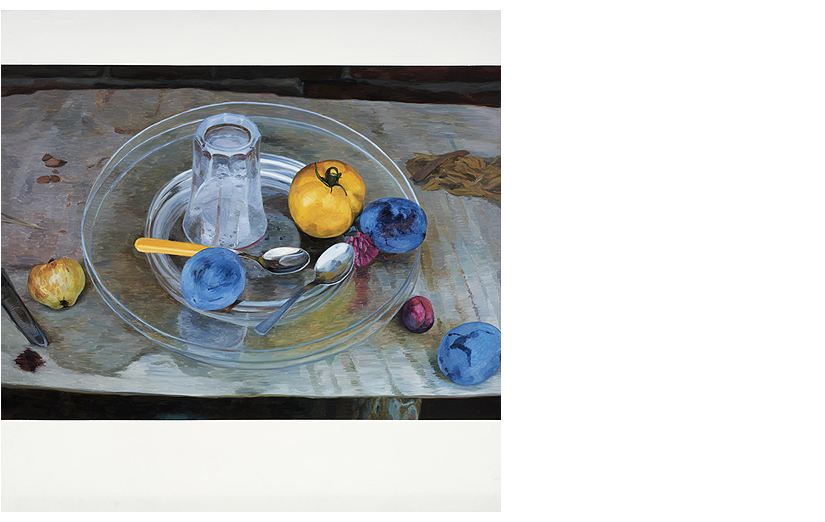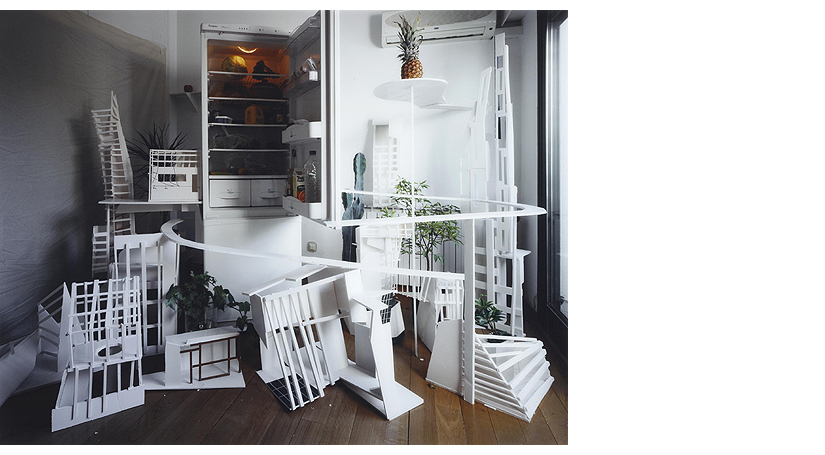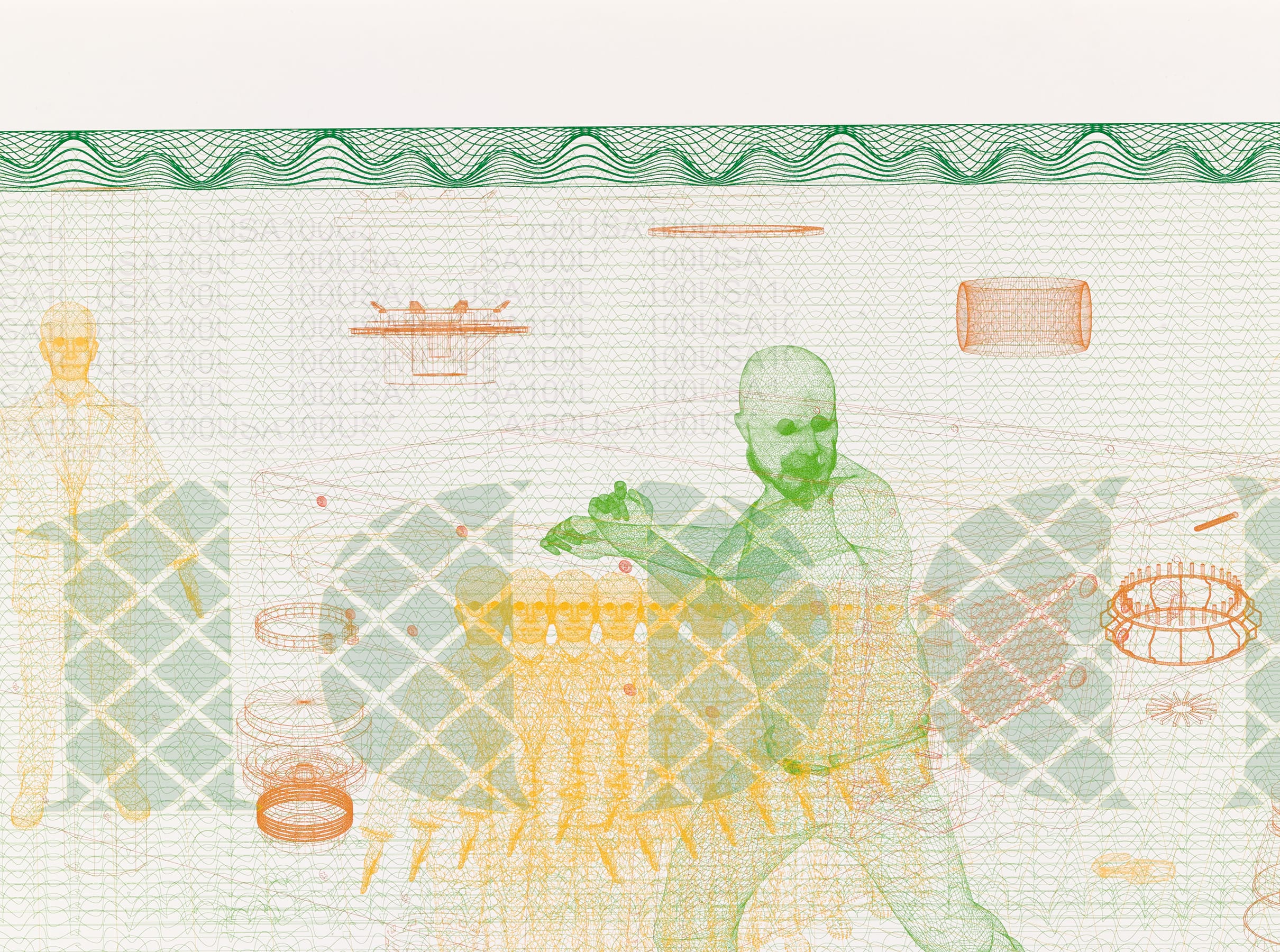
'Highlights' section of Collection website updated with three works that take still-life into new territory
The link established by Baroque treatise writers between the depiction of fruit and flowers and the status of the image has again taken centre stage in contemporary art. Evidence of this can be seen in many of the works in Flowers and Fruits, an exhibition based on works from the Banco de España Collection that examines the history of and the shifts in the still-life genre from its origins in the Baroque period to the present day.
Three of those works —New L.A. Still-Life (Wolfgang Tillmans, 2001), Cabinet nº 43 (Tillmans) (Sandra Gamarra, 2006) and Le Corbusier with a Pineapple (Gonzalo Puch, 2005)— are featured in the latest update of the "Highlights" section of the Collection website, where we regularly present stand-out works from the Collection. All three are included in Flowers and Fruits for Thinking the Image: Unimaginable Still-lifes, one of the five sections of the exhibition, which is open to visitors until 24 February 2023 at the exhibition hall at the Bank's headquarters on Plaza Cibeles. Admission is free (with a prior reservation![]() ).
).
 Wolfgang Tillmans: New L.A. Still Life (2001)
Wolfgang Tillmans: New L.A. Still Life (2001)
In the first of the three, New L.A. Still Life, German artist Wolfgang Tillmans draws inspiration from Spanish Baroque still-life works to create a sort of contemporary vanitas. Tillmans depicts an anonymous domestic scene. In the background, which is slightly out-of-focus, is a chair with a white sheet over its back, while in the foreground stands a table with a black plastic bag containing the remains of food and a glass vase with a long rod from which a pineapple is balanced precariously. Isabel Tejada writes that Tillmans seems to be seeking "beauty in the grime" by presenting a number of perishable objects "...which were once desired and beautiful" but are now well on the way to decomposing.
The artist himself has been quoted as saying that precise observation of the surface of objects is key to understanding anything in this world.On that basis, he seeks to provide a "raw, voracious depiction of reality". Tejada writes that this aspiration links him to painters such as Gustave Courbet and to pop artists associated with neo-Dadaism such as Andy Warhol, Robert Rauschenberg and Sigman Polke. He shares their desire to reflect the contingent, to show us the world and what goes on in it in all its materiality. Although the prior assumptions are very different, that same desire can be seen in 6407-19 (2007), the other work by Tillmans in the Collection. This monochrome work is part of a series called Silver, in which he puts digital photos through the procedures used to develop analogue photos (light, fluids, silver salts), giving rise to highly random images.
 Sandra Gamarra: Cabinet nº 43 (Tillmans) (2006)
Sandra Gamarra: Cabinet nº 43 (Tillmans) (2006)
Wolfgang Tillmans won the prestigious Turner Prize in 2000 and has become one of the most iconic figures of today's renovation of the still-life genre. Evidence of his importance can be found in Cabinet nº 43 (Tillmans), the second work selected for this update of the 'Highlights of the Collection' section. This is an oil painting by Peruvian artist Sandra Gamarra that recreates in paint one of Tillmans' still-life photos, in what can be seen as a complex, incisive exercise in artistic displacement. Gamarra not only translates a photographic still-life into the language of painting, with which the genre is traditionally associated, but does so by combining the technical expertise of conventional still-life painters with a simple but highly disruptive conceptual action: two horizontal strips of white separate the scene from the top and bottom of the frame. This effectively short-circuits the realism of the painting by literally and symbolically showing its limits and, by extension, the limits of any attempt to produce a mimetic depiction of reality.
Maite Méndez Baiges writes that "figurative painting tends to adopt a mirror-image strategy that serves to question the formats and discourses of its exposition". She maintains that what the artist is trying to do here is to show the "colonial outlook which traditional Western painting helps to perpetuate", undertaking a far-reaching process of resignification and re-contextualisation of the still-life genre and other "genres legitimised in the history of Western art" such as self-portraits and landscapes. A case in point is Recourse I (landscape), the other work by Gamarra in the Collection.
 Gonzalo Puch: Le Corbusier with a pineapple (2005)
Gonzalo Puch: Le Corbusier with a pineapple (2005)
The third and last work featured in this update is Le Corbusier with a Pineapple, a photographic record of one of the architectural scenes that Gonzalo Puch sets up with objects found in his home or in the places where he teaches. Here, he recreates a spotlessly white city with high-rise buildings, criss-crossed by elevated highways. He uses fragile structures made of mounting board arranged around an open refrigerator (in which perishable foodstuffs can be seen) and a large pineapple on a shelf, like a monument. He thus ironically turns the utopian urban planning of Le Corbusier, the doyen of the Modernist movement in architecture, into a jumbled, surrealist domestic landscape. That landscape works as a bizarre still-life that reminds us how short-lasting the utopian dreams of human beings are.
Countries, Regions, Roads for Sale & for Hire, the other work by Gonzalo Puch in the Banco de España Collection, is another of his ephemeral architecture pieces, which clearly take Kurt Schwitters' (Merzbau![]() ) as a reference. These little worlds contained in a room are built to be inhabited only for so long as the photo session lasts. They have been described by José Lebrero Stals as "fiction documents". Isabel Tejeda believes that what Puch is trying to do in his markedly interdisciplinary and undoubtedly critical projects —somewhere between performance art, video / photography and installations— is to expand the limits of contemporary visual language.
) as a reference. These little worlds contained in a room are built to be inhabited only for so long as the photo session lasts. They have been described by José Lebrero Stals as "fiction documents". Isabel Tejeda believes that what Puch is trying to do in his markedly interdisciplinary and undoubtedly critical projects —somewhere between performance art, video / photography and installations— is to expand the limits of contemporary visual language.
